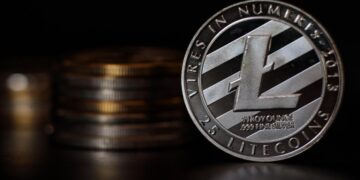Litecoin shares several similarities with Bitcoin. Both are open-source projects that use proof of work to verify transactions.
But Litecoin has some notable differences from Bitcoin, too. Besides processing speed, there’s the issue of supply. While Bitcoin is capped at a maximum supply of 21 million coins, Litecoin is capped at 84 million coins.
How Litecoin Is Mined
Litecoin miners solve complex mathematical problems called hashes to earn the right to record new transactions to the blockchain.
The blockchain cannot be altered once a block is closed. As a reward for being the first miner to correctly solve the hash associated with a transaction via the proof of work consensus mechanism, the miner receives 12.5 LTC.
Litecoin mining operations aren’t something you’ll typically see running on a computer out of someone’s living room. Solving hashes requires immense computing power, which requires significant energy and space.
In fact, the lion’s share of Litecoin mining is performed by mining farms and pools of crypto miners using sophisticated hardware.
How Litecoin Halves
To help control Litecoin’s supply, Litecoin halves just like Bitcoin.
Litecoin’s supply is capped at 84 million coins. Yet when miners add a new block to Litecoin’s blockchain, they’re rewarded with newly-generated LTC. This could indefinitely increase the supply of Litecoin if it weren’t for halving.
Through halving, the miner reward for successfully recording new blocks to the Litecoin blockchain is decreased (halved) at regular intervals. In Litecoin’s case, it’s every 840,000 transactions. So when Litecoin first launched, the miner reward for adding a new block to Litecoin’s blockchain was 50 LTC. Over the past few years, that reward has decreased via halving to 12.5 LTC as a block award.
The next LTC halving is expected to happen in 2023.




